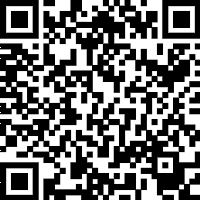Identifying noisy signal errors resulting from a mathematical model of solar panels for spacecraft.
Researcher:
Researcher/ Wael Ahmed Mortada Atwa
Summary of project:
Bruni's method is an effective feature extraction technique when applied to signals in a noise-free environment. However, the space environment is very rich in various noise sources. Noise has a significant impact on the Bruni method, reducing its performance. The goal of this research is to provide an effective and robust error detection and recognition technique in a noisy environment on one of the most vital subsystems in the spacecraft, the electrical power generation subsystem. The occurrence of anomalies in the spacecraft subsystem is mainly related to some variables, and the variables represent: voltage, current, and electrical energy generated from them. This will directly affect the mission of the spacecraft, and may result in the loss of the space mission, whether partial or complete. It is necessary to provide the spacecraft's on-board computer with a diagnostic task, so that the variables of the power generation subsystem can be tracked, detected, and identified malfunction efficiently at different noise levels. The proposed approach is based on the energy contents of the noisy signal. The signal power contents are large enough compared to the noise power contents. The algorithm uses the short energy time of noisy signals to robustly identify faults caused by photovoltaics, according to their causes such as closed circuit, open circuit, and shading. From all the above, it has been demonstrated that the proposed approach is able to distinguish between different types of faults caused by photovoltaic cells. It is demonstrated that the obtained results ensure the robustness of the proposed algorithm, as it is done at different noise levels, with minimum task execution time and a small memory footprint. The proposed algorithm is generally considered an approach to identify the fault in a noisy signal.
The objective of the project:
1. Implementing a powerful and accurate mathematical model for solar panels with the ability to simulate impurities.
2. Implementation of the fault identification task using neural networks in the space system integrated on the spacecraft’s computer.
3. Calculate the maximum time to perform the fault detection task and schedule this task in the spacecraft computer task schedule.
4. Implementation of a space communication protocol to exchange data between the spacecraft computer and the power system (solar cell array model based on computer modeling).
5. Extracting features of power signals in the presence of different noise levels of 1%, 10%, and 30%. Thus, testing the robustness of the system against additional noise.
6. Implementing the fault injection mechanism for the mathematical model of solar cells.
The most important outputs:
The task of identifying faults in the spacecraft's computer software for solar modules.
Mathematical model of solar modules using SIMULINK
Data set for normal operation and incorrect operation of solar energy units using MATLAB
Research papers.
Status reports.
the final report.
A collection of images that express the outputs











